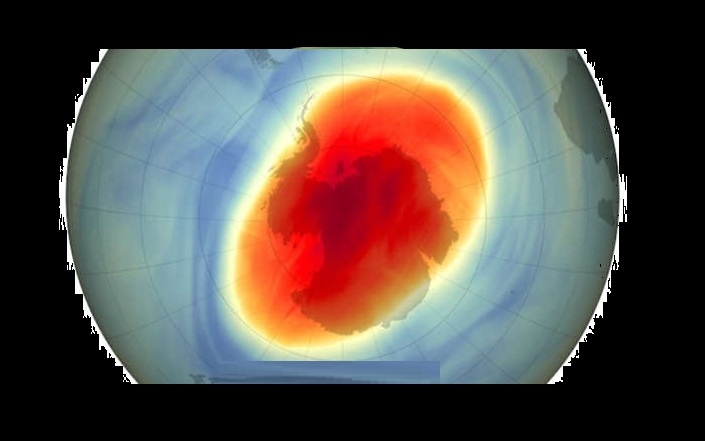Ozone hole continues shrinking in 2022, says NASA
28 Oct 2022 18:40:20
The ozone hole continued on its shrinking trend as scientists reveal the current situation over the South Pole. The Antarctic ozone hole reached an average area of 23.2 million square kilometers between September 7 and October 13, 2022.
The current estimate over the South Pole was slightly smaller than last year and generally continued the overall shrinking trend of recent years. The 2021 estimates showed the ozone hole was at 24.8 million square kilometers.

The ozone hole is the thinning of the ozone layer in the stratosphere above Antarctica that begins every September when chemically active forms of chlorine and bromine derived from human-produced compounds are released during reactions on high-altitude polar clouds.
“Over time, steady progress is being made, and the hole is getting smaller. We see some wavering as the weather changes and other factors make the numbers wiggle slightly from day to day and week to week. But overall, we see it decreasing through the past two decades. The elimination of ozone-depleting substances through the Montreal Protocol is shrinking the hole,” Paul Newman, chief scientist for Earth sciences at Nasa’s Goddard Space Flight Center, said in a statement.
Researchers at Nasa and Noaa used instruments aboard the Aura, Suomi NPP, and NOAA-20 satellites to analyse the current trend and found that on Oct. 5, 2022, those satellites observed a single-day maximum ozone hole of 26.4 million square kilometers, slightly larger than last year.
Scientists have also made measurements with a Dobson Spectrophotometer, an optical instrument that records the total amount of ozone between the surface and the edge of space – known as the total column ozone value.
While scientists were concerned about potential stratospheric impacts from the January 2022 eruption of the Hunga Tonga-Hunga Ha’apai volcano, no direct impacts from Hunga Tonga have been detected in the Antarctic stratospheric data.
The 2022 hole is substantially smaller than the ozone holes in the late 1990s and early 2000s. The hole has been recuperating from the damage due to the Montreal Protocol banning the release of harmful ozone-depleting chemicals called chlorofluorocarbons, or CFCs.
The ozone hole is also monitored by scientists at the South Pole Station by releasing weather balloons carrying ozone-measuring instruments called ozonesondes that measure the varying ozone concentrations as the balloon rises into the stratosphere.